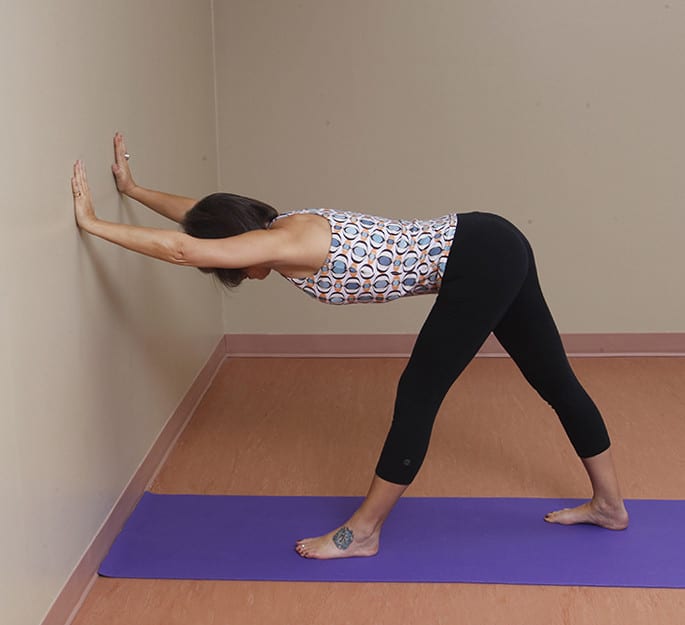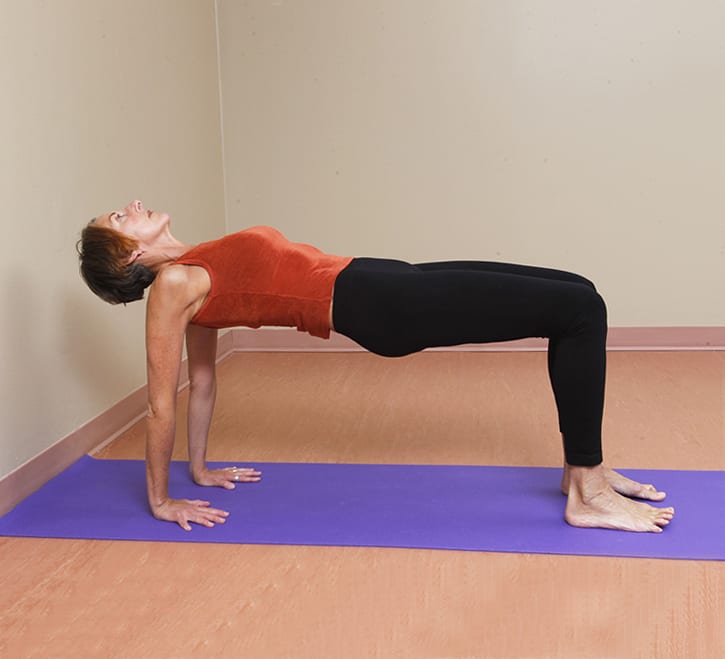Until we experienced a yoga class, most of us never considered a person could be too flexible. In hypermobile bodies, ligaments and tendons can be too loose to prevent excessive movement of the joints, which can result in serious injury and, over time, arthritis. Hence, it is vital to balance flexibility with strength in any physical practice.
Joint instability such as hyperextension is routinely found in the knees, where one long bone (femur/thighbone) stacks atop another long bone (tibia/shinbone) with only ligaments and tendons to properly align them. In knee hyperextension — too much opening in the back of the knee — the upper end of the shinbone has been pulled back behind the lower end of the femur. This misalignment of the two bones can be a result of poor posture and/or weak quadriceps (large muscle in the upper leg). For example, many of us habitually stand with our pelvis slightly forward of our legs, which tightens our hamstrings, weakens our quads and pulls the head of the shinbone back and out of alignment with the femur.
How do you know if your knees are hyperextending? Stand sideways in front of a mirror. Your outer hip, outer knee and outer ankle should form a straight line. If you are hyperextending, your knee will be back of the straight line and your leg will appear bowed backward. That is, your shinbone has moved back. In an aligned leg, the head of the shinbone moves forward. Moving the head of the shin forward requires the muscles connecting to the knee joint to balance its workload. The resulting stability and ease of movement relaxes your torso and frees your awareness to focus on your breath and other sensations in your body — a practice referred to as mindful meditation.
A common “fix” for knee hyperextension is to micro-bend the knee and then engage the quadriceps above the knee cap. As a result, the leg may appear straight, but this is only a superficial remedy as the tibia still sits back of the femur. Aligning the bones (femur and tibia), then strengthening the surrounding muscles is the soundest way to correct hyperextension.
Action: For individuals with knee pain which is NOT from another internal injury, the following standing poses will be therapeutic. Move into each pose by directing the head of the shinbone forward. For more advanced practitioners, combine this action with moving the head of the femur bone back. Hold each pose for 5 to 10 breaths gradually building muscle strength.

HIGH LUNGE
Place a block at the head of your shinbone and into the wall. Position your foot with the ankle directly under your knee. With your hands into the wall, complete the Action (move the shinbone into the block) as you slowly walk your back foot away from the wall coming into the bent knee position. Keep your extended leg heel lifted and pointing straight back.

PARSVOTTANASANA (Intense Side Extension pose)
Stand an arm’s length away from the wall. Keep your left foot in place and step your right leg back, turning the right toes out slightly. Complete the Action in both shinbones as you fold at the hip creases and reach your palms to the wall. Hold for 5 to 10 breaths. Bend the front knee to step the back leg forward. Repeat on the other side.

ARDHA PURVOTTANASANA (Half Upward-facing Plank pose)
Take a seated position with knees bent, feet pointing forward and hip-distance apart. Place your hands slightly behind your buttocks with fingers pointing to your feet. On an inhale, lengthen your spine, and on an exhale, press into your hands and feet. Move the shinbones forward as you lift your pelvis level with your shoulders and knees.
For more information, refer to Creating Space: Yoga Actions for Legs & Knees




